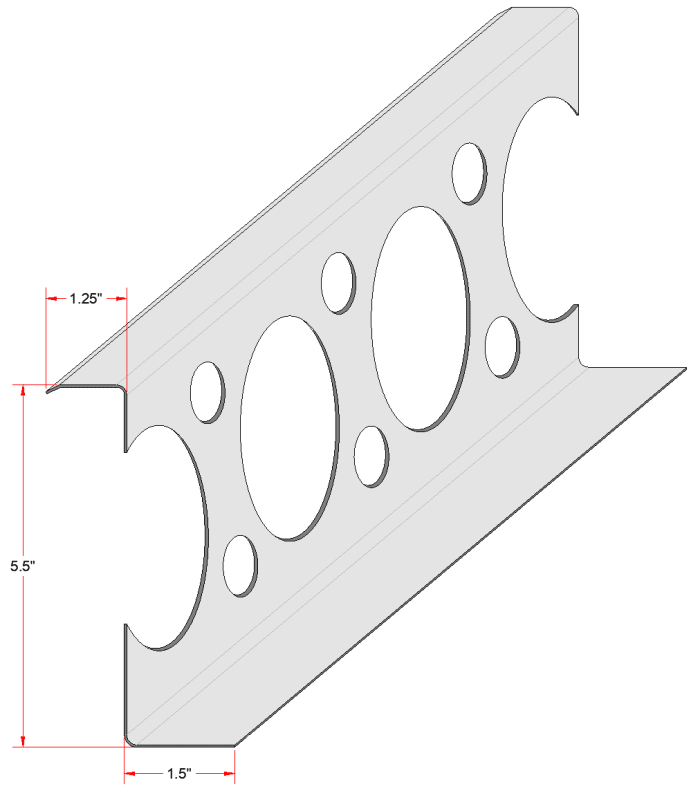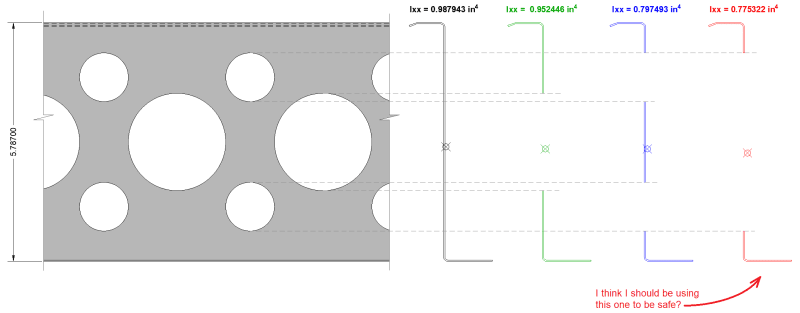Leo Baldwin
Structural
- Nov 25, 2016
- 24
Trying to find moment of inertia in^4) for a steel beam that looks like the attached (22 gauge steel).
Finding MOI for any beam is easy if it has no side holes.
Not sure if it helps, but I can actually have SolidoWorks FEA analysis done to get the total deflection.
I need to find the MOI (in^4) to be able to quickly get deflection calc with varying loads/spans.

Finding MOI for any beam is easy if it has no side holes.
Not sure if it helps, but I can actually have SolidoWorks FEA analysis done to get the total deflection.
I need to find the MOI (in^4) to be able to quickly get deflection calc with varying loads/spans.


